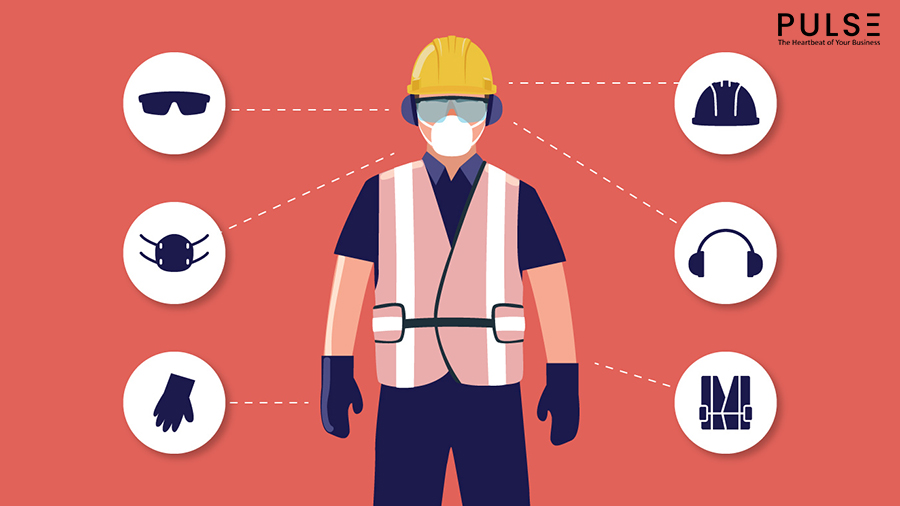The Occupational Safety and Health Administration (OSHA) is a federal regulatory agency created within the Department of Labor by the Occupational Safety and Health Act of 1970 (OSH Act). Adhering to OSHA compliance is primarily focused on lifting and protecting the worker’s safety risks in various workplaces. PPE, or Personal Protection Equipment Kits, also fall under OSHA’s jurisdiction.
PPE kits have to match a certain standard to be effective in construction sites. OSHA ensures that only tested and standardized PPE kits pass the checks, and workers get the necessary safety equipment.
OSHA Compliance: Which Part Deals with PPE?
Part 1926 of the OSHA norms deals primarily with the PPE kits. It includes steps for manufacturers and employers to follow and details of the PPE equipment’s tests.
Understanding OSHA guidelines will help organizations ensure compliance and give workers the safety they deserve.
PPE Standards for OSHA Compliance– All You Need to Know

Organizations need to provide safety gear and PPE kits to their workforce to prevent on-site accidents and issues. Therefore, it is essential to have insights into these OSHA PPE standards to regulate the procedures.
OSHA Standard 1926 Subpart C: General Safety and Health Provisions
OSHA 1926 deals with occupational safety and health administration. The Subpart C of the section mandates that machinery, tools, materials, and equipment must follow OSHA guidelines. In addition, there are various clauses to the 1926 Standard, which we will discuss below.
PPE 1926.28
This standard describes the employer’s fundamental responsibility of providing safety equipment to its workforce in case of exposure to hazardous conditions.
It is described as a mandatory initial step towards ensuring proper adherence to the OSHA protocols. This stage doesn’t describe the kind of valuable equipment for controlling accidents but mentions the adequate usage in situations involving dangers and exposure to toxic material.
1926 Subpart E: Personal Protective and Life Saving Equipment
This PPE 1926.95 section of OSHA compliance describes the employer’s duty of ensuring proper availability of PPE kits to be provided by them without levying any costs from the employees.
Employers must provide gears crucial for usage in industries with proper checking and reviews, and the cost of which must be debited from the employer since it is a part of their responsibility.
They must also ensure that the gear is well maintained and sanitized to comply with the section in totality.
PPE requirements for head protection: 1926.100
This OSHA standard presses on the subject for wearing head safety gear to avoid injuries, shock, head strikes, falling objects, and burns in the workplace.
The documents containing the information are ANSI Z89.1-2009, ANSI Z89.1-2003, or ANSI Z89.1-1997.
PPE requirements for hearing protection: 1926.101
According to this OSHA compliance standard, employers must provide their workers with protective gear for the ears, such as earplugs and earmuffs or both, when exposure increases beyond the permissible decibel range.
These requirements are listed in the OSHA Standard 1926.52 on occupational noise exposure. In addition, the guidelines make it explicitly clear that for ear safety, earplugs are not sufficient. Further, it says that only competent authorities can guide the plugs’ process.
PPE requirements for face and eye protection: 1926.102
This OSHA regulation mandates face and eye protection to avert injuries from this list of hazardous elements on any site under its jurisdictions:
- Flying particles
- Molten metal
- Liquid chemicals
- Acids or caustic liquids
- Chemical or caustic vapors
- Potentially injurious light radiation
The eye and face protection covers more than chemical splashes; it reasonably states the use of comfortable and well-designed to protect the face and eye from any damage adequately.
It also emphasizes its fit and hygiene for usage. The compliance notes suggest the use of side-eye protection to protect the eyes from flying debris; these can include goggles and shields.
PPE requirements for respiratory protection: 1926.103
This clause deals with the availability of respiratory protection by issuing respirators and enforces proper ventilation at the workplace to achieve that.
The construction and manufacturing industries involve various tasks and tools, increasing exposure to hazardous items, accidents, and toxic materials.
Compliance with OSHA norms and safety gear is one way to prevent such incidents. They constitute the well-ridden measures that make the workplace safe and secure.
OSHA compliance is a must. However, orgs often struggle to manage their safety standards using manual auditing and checklisting processes that are lengthy, cumbersome and prone to errors.
Pulse is a one-stop platform that makes the process of audits and compliance way easier using digital checklists. Pulse streamlines your compliance from day 1 with super-intuitive UI and industry-leading integration.
Take a look into how Pulse’s powerful digital checklisting and elegant interface can help ramp up the safety and compliance of your construction site.
